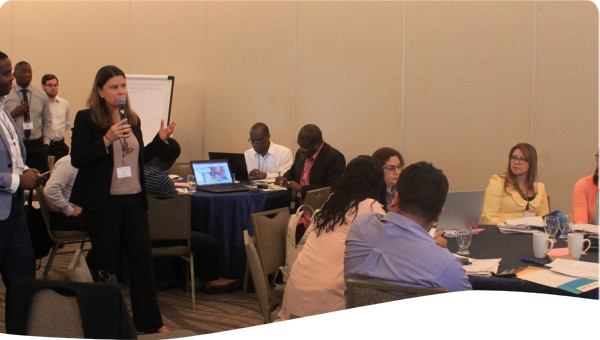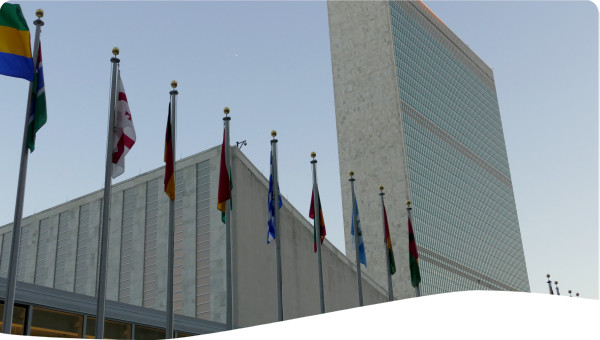With the introduction of IWRM, South Africa has shifted the design and implementation of water management to local institutions. This has created a demand for innovative methods for local stakeholders’ participation. Action was taken to introduce the participatory Companion Modeling Approaches, based on the use of simulation models and role-playing games. This case study illustrates new methods and tools that facilitate dialogue and improve decision-making skills of local stakeholders.
Most Southern African countries have enacted or amended their water laws and policies during the last 15 years or so and restructured their institutional and governance frameworks accordingly. Integrated Water Resource Management inspired new Southern African water policies.
Following the subsidiary principle, the design and implementation of water management and allocation policies are transferred from the state to local institutions, which often have a better knowledge of the catchment functioning and where representatives of local water stakeholders are allowed to negotiate and jointly decide water management strategies and measures.
A community of researchers called ComMod (Companion Modelling) recently developed a scientific posture regarding the adoption of simulation models and role-playing games for assisting participatory management of natural resources. There are two main features of this approach. The first is to take into consideration, from the beginning of the modelling process, the stakeholders’ view of the studied problem. The second is to validate model hypotheses through the experience of the stakeholders. This results in an iterative process of comprehension, confrontation and analysis that involves local users, institutions and researchers. This iteration is also aimed at validating or refuting the tools, such as models and role-playing games, which will be adopted by stakeholders for local negotiation. In addition to ComMod, other models were applied (KatAware model, Wat-A-Game).
In order to address the need for innovative methods for local stakeholders’ participation in water management, within a project supported by the Water Research Commission of South Africa, a participatory process called Companion Modelling (ComMod) was implemented in the Kat River valley (Eastern Cape Province), where the local Water User Association was busy drafting its catchment plan. The ComMod approach was applied as one of the approaches to facilitate multi-stakeholder negotiations related to water allocation.
To conduct the ComMod process in the Kat, a task force composed of two Cirad researchers (Modelling team) and two Rhodes researchers (Social team) was formed. A South African MSc student was involved full-time in the process, a French MSc student worked on the modelling component during six months, whereas several South African and international students contributed to the facilitation and data-collection tasks during their internships at Rhodes University. A South African facilitator-translator was also part of the team.
The ComMod experience in the Kat River Valley was an attempt to support the local WUA to develop those negotiation and decision-making skills that are needed to produce a CMP. The main objectives of the ComMod process are (ComMod Group, 2003 and 2006):
- Producing knowledge (for the researcher and for the local stakeholders) in terms of an improved comprehension of system interactions; and
- Supporting the negotiation process that aims at modifying the interactions with the resource (water here) as well as among socio-economic entities.
The process uses modelling and simulation tools to build-up a common representation of the studied system, understand its dynamics, and provide support for the analysis of scenarios It seems useful at this stage to discuss how these objectives were matched (or not) through the adoption of the ComMod approach in the Kat. ComMod supposes finally a positioning of the researcher in the process, which is also important to discuss in the Kat case.
Collective learning, communication among stakeholders, and common decision making undoubtedly took place during the ComMod process in the Kat, but it is difficult to separate the effects of ComMod from the effects of the many other projects and initiatives that took place in the Kat since 1994. While some significant insights were gained by participants, it is important to consider whether this would have been possible without the “field preparation” provided by the previous projects.
One lesson seems to be particularly relevant for future applications of participatory approaches in similar contexts. In South Africa during the last years, many projects have been implemented with the main goal of helping local stakeholders to express their “visions” or to elicit “mental models” about water uses, related problems and perspectives. Most of, if not all, these projects have produced interesting reports and literature that did not actually concretize into a real negotiation support for the involved stakeholders. The “technical phase” of negotiation and decision making process has always been neglected so far, with the emphasis being on the preparatory phase of “visioning”.
In the Kat project, which had as its explicit objective the development of a CMP with the KRWUA, the ambition to go beyond “visioning” and move towards the real negotiation process leading to the “technical decision making” phase was clear. The contribution of ComMod in this direction was instrumental, as the model first allowed quantifying and representing spatially the problems, and the RPG then facilitated the discussions and the debates around these problems. During the Kat Project, the preparatory phases leading to “visions” determined few if no conflicts among local stakeholders. The real conflicts emerged when alternative water allocation strategies expressed as m3 of water to different groups of stakeholders were proposed and discussed. The quantified scenarios allowed by the model KatAWARE were the bottom line for these discussions.
Even if the ComMod process and the consequent discussion and provisional choice of scenarios is only preliminary to the technical phase of common decision making, which should lead the KRWUA to the definition of the CMP, the crucial step towards local negotiation and decision-making around water management was reached in the Kat. Through the co-construction and discussion of quantitative scenarios, the KatAWARE process proved a useful, though improvable, accompaniment to the local WUA as they progressed from the qualitative step of “visioning” and definition of priorities to the preparation of a negotiated CMP.
This case study shows new methods and tools that facilitate dialogue and improve decision-making skills of local stakeholders for effective, equitable and sustainable water management.
Applied research might support decentralization efforts in Southern Africa. This research is designed and implemented in very close collaboration with all parties involved in water policy decentralization.
 Case studies
Case studies


